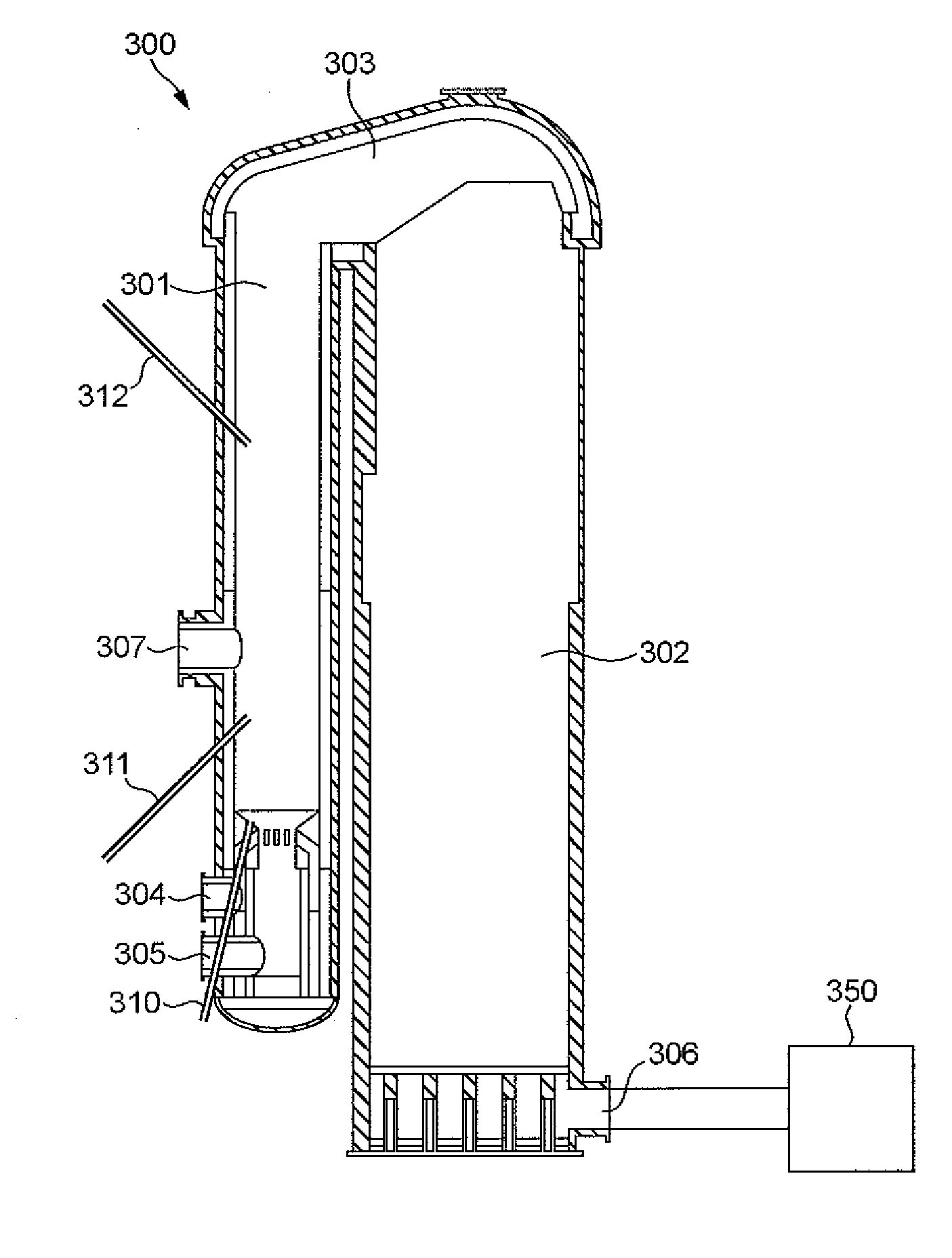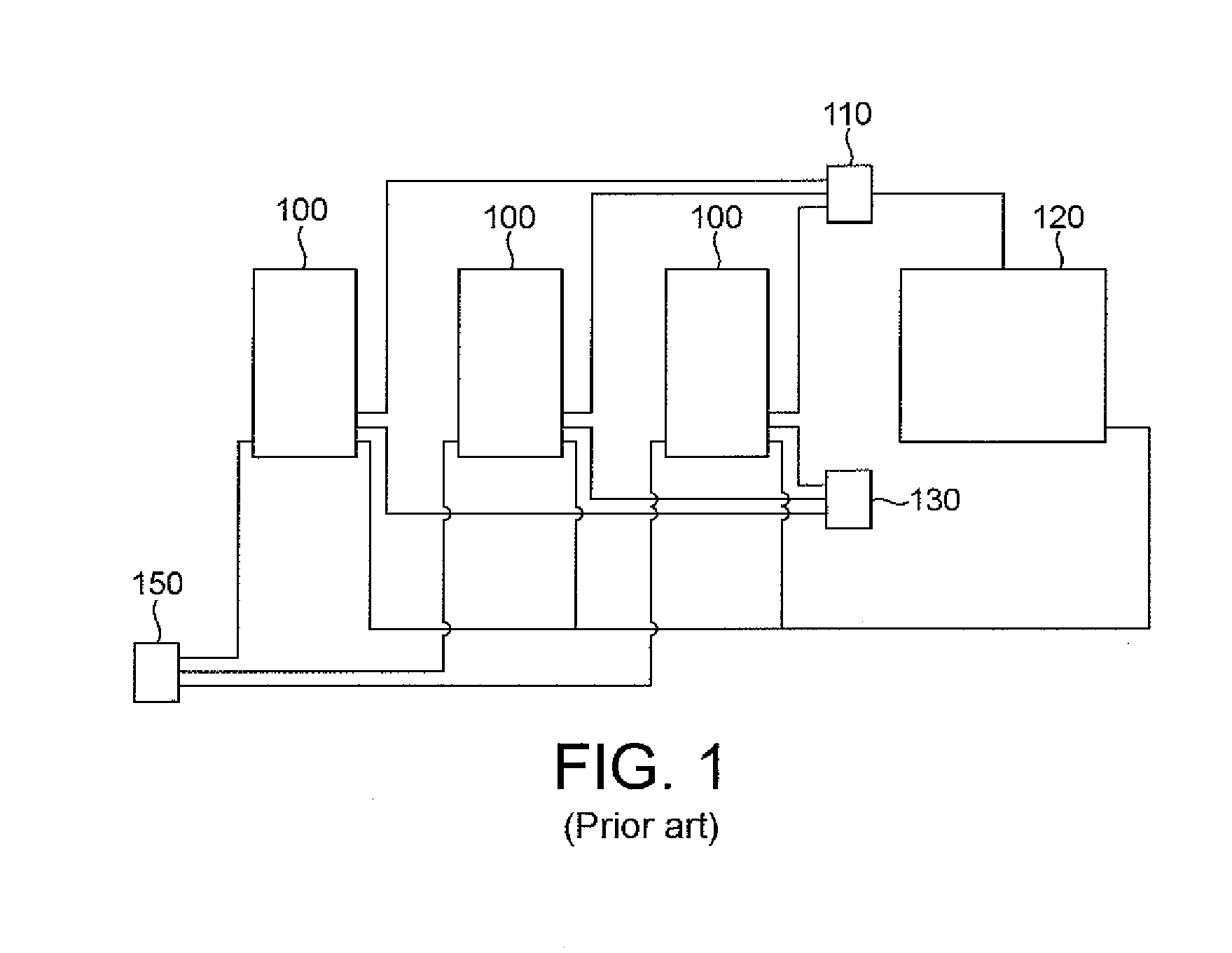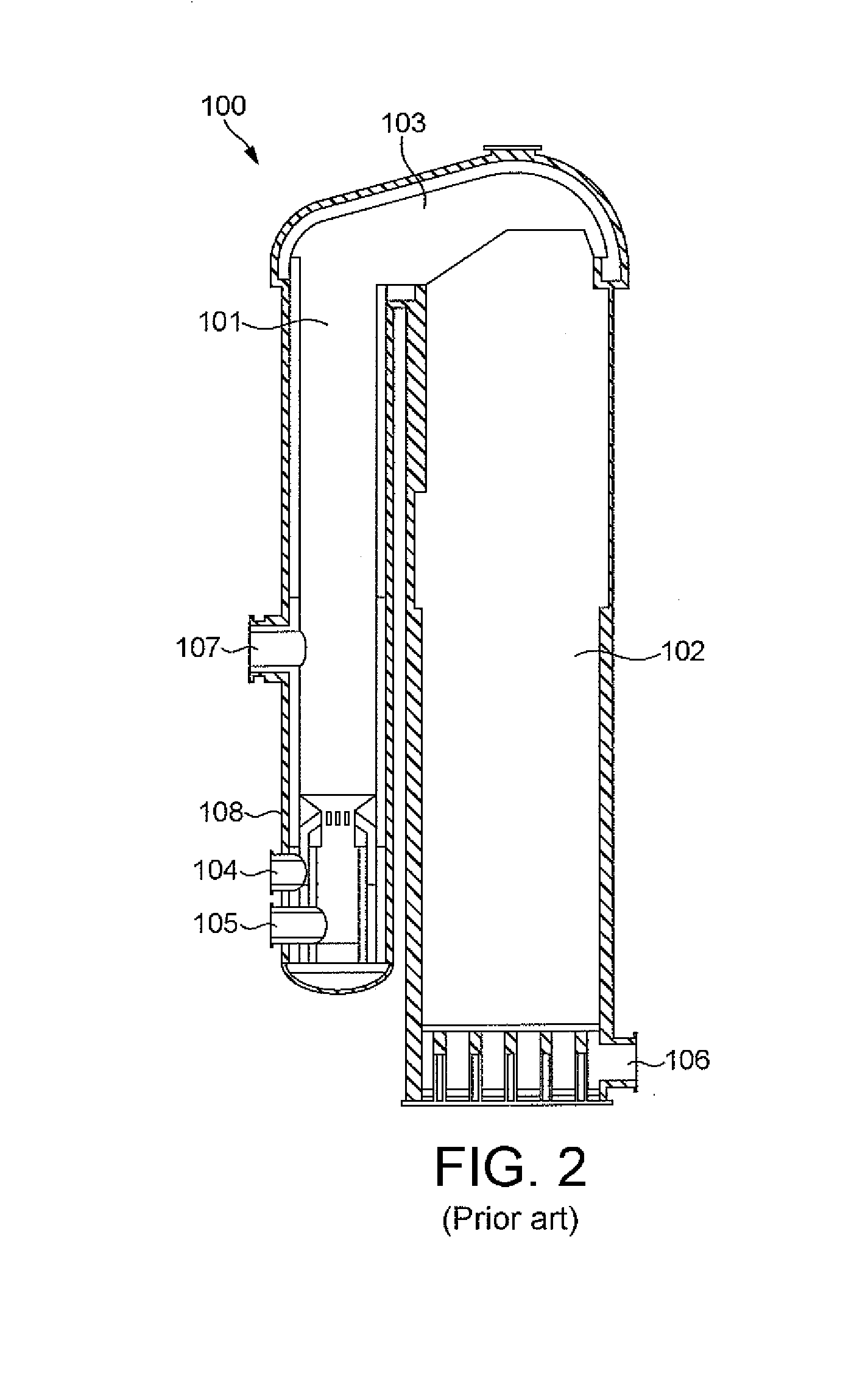Apparatus and method for heating a blast furnace stove
a blast furnace stove and stove body technology, applied in the field of blast furnace stove heating methods, can solve the problems of increasing the overall emissions of carbon dioxide from the plant, high flame temperature of the peak flame, and approaching the limits of thermodynamic efficiency
- Summary
- Abstract
- Description
- Claims
- Application Information
AI Technical Summary
Benefits of technology
Problems solved by technology
Method used
Image
Examples
Embodiment Construction
[0022]FIG. 1 illustrates the principal arrangement of a blast furnace 120 and three stoves 100 in an iron works. The operation of the blast furnace 120 produces blast furnace top gas or “top gas”, which is fed, using a fuel supply control device 110, to each stove 100 to be used as fuel to heat the stove 100 in question. The top gas is combusted with an oxidant in the form of air, which is supplied by an air supply control device 130.
[0023]Each stove 100 comprises refractory material in the form of ceramic bricks or the like, which is first heated and then used to heat blast air which is fed into the blast furnace.
[0024]When operated in refractory material heating mode (“on gas” mode), the top gas is combusted in the stove 100 with the oxidant, and the combustion gases are fed to a flue gas treatment device 150, possibly including a conventional carbon capture step.
[0025]When operated in blast air heating mode (“on blast” mode), air is led through the refractory material in the oppo...
PUM
| Property | Measurement | Unit |
|---|---|---|
| temperature | aaaaa | aaaaa |
| velocity | aaaaa | aaaaa |
| temperature | aaaaa | aaaaa |
Abstract
Description
Claims
Application Information
 Login to View More
Login to View More - R&D
- Intellectual Property
- Life Sciences
- Materials
- Tech Scout
- Unparalleled Data Quality
- Higher Quality Content
- 60% Fewer Hallucinations
Browse by: Latest US Patents, China's latest patents, Technical Efficacy Thesaurus, Application Domain, Technology Topic, Popular Technical Reports.
© 2025 PatSnap. All rights reserved.Legal|Privacy policy|Modern Slavery Act Transparency Statement|Sitemap|About US| Contact US: help@patsnap.com



